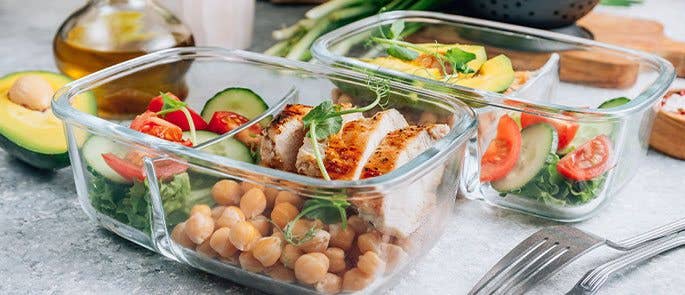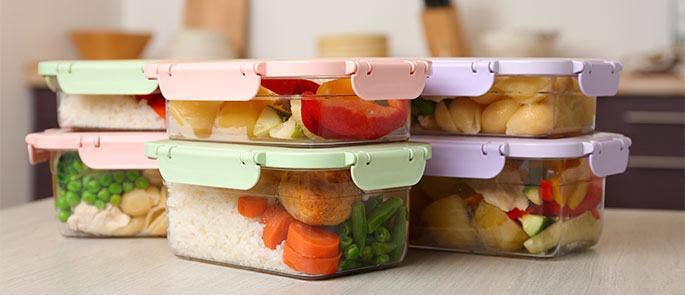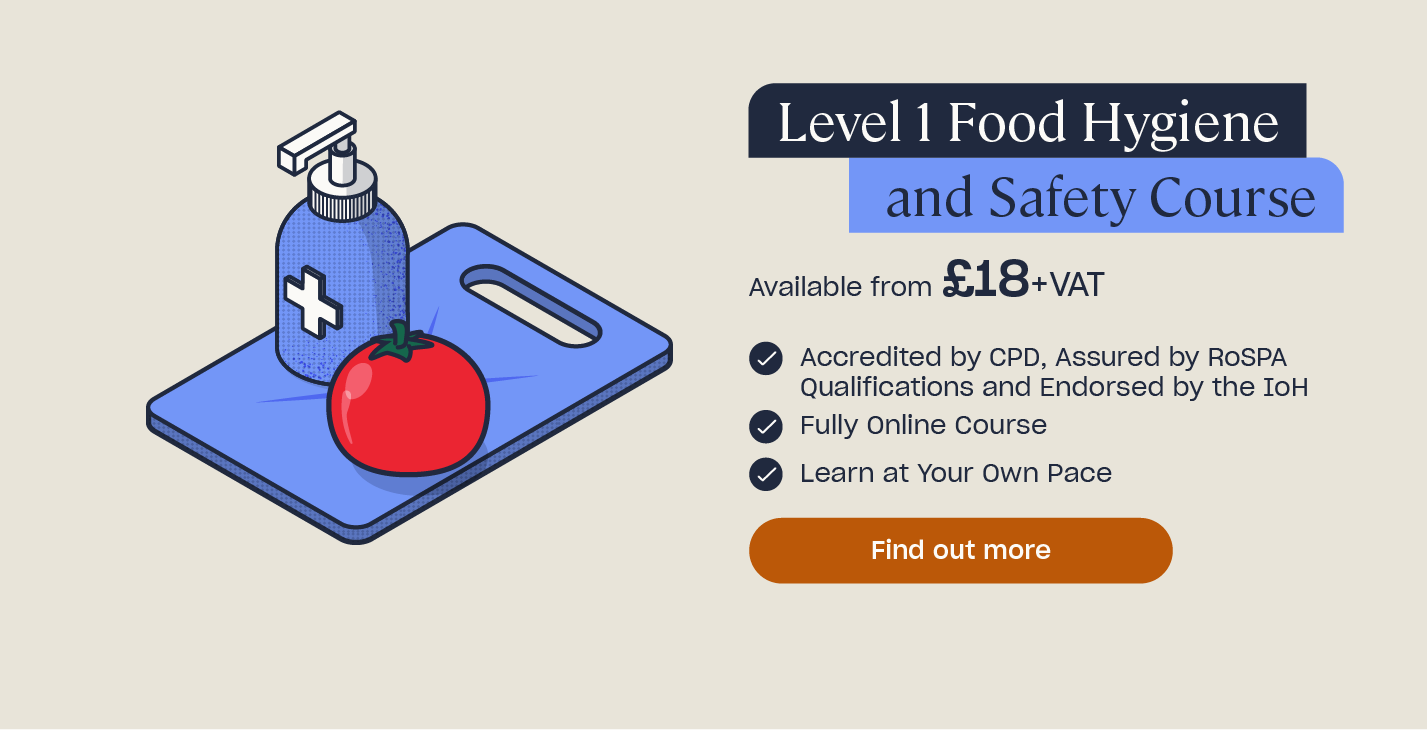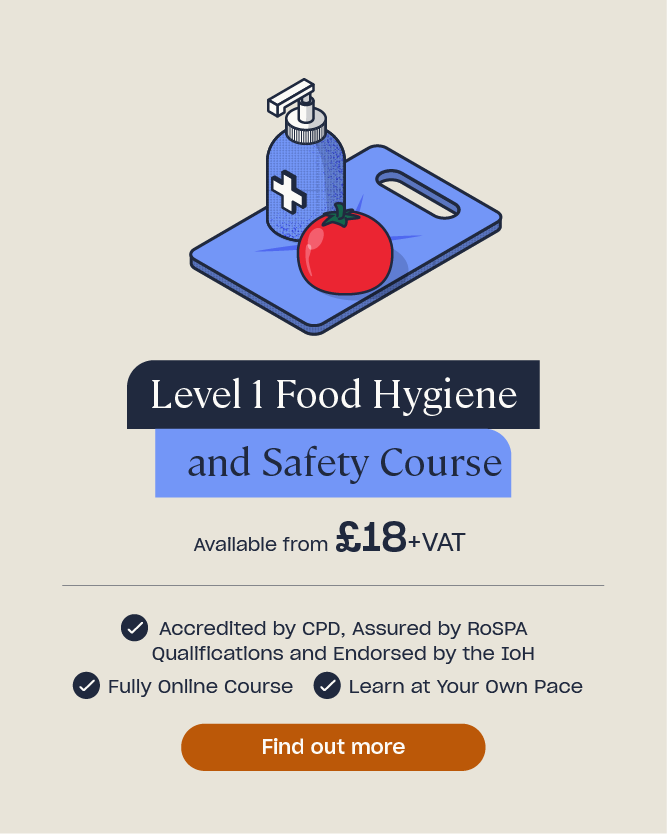Meal Prep Guide
Meal prepping is something that many people do on a weekly or monthly basis in order to save time and money. It doesn’t matter whether you live alone, with housemates or with a family of children – planning and preparing your meals ahead of time can be highly beneficial, and not just for your bank account. If you’re a beginner to meal prepping and want to know more about how to meal prep safely, then this guide will help you to understand what meal prep means and how long meal prep lasts for, and will provide you with some top food safety tips for effective meal prepping.
What is Meal Prep?
Meal prep is short for ‘meal preparation’ and simply means preparing meals ahead of time. It could be that you’re preparing entire dishes ahead of schedule, such as a finished lasagne or family-sized chilli con carne, or it could be that you’re preparing lunchboxes for the week ahead or just the ingredients for later that night.
In order to meal prep effectively, you’ll need all of your ingredients to hand and a free afternoon or evening that you can set aside to cooking. You’ll also need enough storage containers to hold your finished meal prep until you’re ready to eat it.

There are many benefits to meal prepping, including:
- It’s more cost-efficient, as you can buy ingredients in bulk.
- You’ll save money, as you’re only buying what you need.
- It can be a more convenient way to prepare food.
- It saves time, as you’re not needing to spend time cooking every day.
- It helps to reduce food waste.
- It reduces the likelihood of impulse food buying, meals out or takeaways if you know you’ve already got a meal ready at home.
- You can better manage portion sizes.
- It can encourage healthy eating habits, as you have control over the nutrition of the meals you make.
- Meal planning enables you to choose a wider variety of meals, instead of cooking the same recipes over and over.
- You’ll ensure you have access to a healthy, homemade meal each day.
There are different types of meal prep to consider – some people choose to prepare their meals for just the week ahead and store the food in the fridge to reheat when required, whilst others do meal prep to put in the freezer for a later date when they don’t have time to cook. Different types of meal prep include:
Make-ahead meals – where the whole meal is cooked in advance, such as a curry, and then refrigerated or frozen in individual portions. When you’re ready to eat the meal, no further preparation is required and you can simply defrost and reheat it.
Batch cooking – where a large quantity of food is made ahead of time and then stored in the fridge or freezer for later use. When batch cooking, you might make four times what the recipe says, saving one portion for later that evening and putting the other three in the freezer.
Ready-to-cook ingredients – where ingredients for a specific meal are prepared ahead of time, so it takes less time to cook later on. For example, peeling and chopping all the vegetables for a casserole the night before, then refrigerating them to cook with the next day.
Best Foods for Meal Prep
All types of meals and snacks can be prepped in advance, including breakfasts, lunches and dinners, and there aren’t really any rules about which foods can and can’t be used for meal prep. The best foods for meal prep are:
- Vegetables – including frozen and fresh veg. You can meal prep all types of vegetables and salad ingredients ahead of time by washing, peeling, chopping and cooking them.
- Proteins – including meat, fish, poultry and vegetarian/vegan alternatives. Protein ingredients can all be cooked in advance and cooled ready to eat.
- Pulses, grains and carbohydrates – including pasta, rice, couscous, beans, chickpeas and quinoa. These ingredients can all be cooked ahead of time and usually form the bulk of your meal prep meals.
- Fruits – all types of fruit can be washed, peeled and chopped and then stored in the fridge or freezer.
- Eggs – eggs can be boiled or scrambled ahead of time and then reheated or eaten cold. You can also meal prep fried or poached eggs, but the texture of them can be altered when it comes to reheating, so you may prefer to cook these ones fresh.
Looking For More?
Need some inspiration for what to cook for your meal prep meals? Take a look at our articles on Vegan Meal Ideas, Make-Ahead Meal Ideas or Vegetarian Diet Tips.
How Long Does Meal Prep Last?
As long as you cool your meal prep meals safely and store them correctly, your prepared foods can last in the fridge for up to five days or up to four months in the freezer.
Once you’ve cooked your meals, it’s vital that you cool, store and label them correctly in order to avoid foodborne illnesses. This means keeping your meal prep meals out of the temperature danger zone – between 8 °C and 60 °C – and cooling it down as quickly as you can as, the cooler the temperature, the less likely it is that harmful bacteria will develop.
Once cooled, decant your meal prep meals into suitable containers and label them with the contents, the date you made it and the date it needs to be eaten by. If you want to learn more about freezing food, take a look at our additional articles on How Long You Can Freeze Food For and Tips for Storing Food in the Freezer.

Your meals will also last longer if you use the right storage containers. Whether you choose to use plastic boxes, reusable silicone bags, stainless steel tubs or glass jars, it’s important that your meal prep storage is:
- Sealable and airtight.
- Freezer-safe.
- Leak-proof.
Is Meal Prep Safe?
Food hygiene and food safety are an essential part of meal prepping, as you need to ensure the food you’re preparing is free from harmful bacteria that could cause illness. On the whole, meal prepping is a safe way of preparing food – just make sure you adhere to the following food safety advice when preparing, cooking, cooling and storing your meal prep meals:
- Wash your fruit and vegetables thoroughly in clean, running water before prepping to remove any soil or dirt left on them.
- Wash your hands properly before cooking and after handling high-risk ingredients, such as raw meat and fish.
- Remember core cooking temperatures: food must reach at least 70 °C for two minutes, 75 °C for thirty seconds, or 80 °C for six seconds. A probe thermometer can help you take this reading.
- Try to cool foods down to fridge temperature within 90 minutes of cooking.
- Keep your fridge set to 8 ºC or below. Best practice is to set it to 5 ºC to prevent bacteria from multiplying on food.
- Ensure you’re storing food on the correct fridge shelves for good food hygiene.
- Keep your freezer set to -18 °C and defrost it regularly.
- Always thaw frozen food safely in the fridge, not at room temperature, and consume the defrosted meal within 24 hours.
- Only ever reheat your meal prep meals once, as multiple reheating increases the risk of food poisoning.
Meal Prep Tips
If you’re new to meal prepping, the following top 10 meal prep tips will help you get the most out of your cooking:
- Create a meal plan for the week or month before you begin cooking, then write a shopping list of all the ingredients you need to make everything.
- Try new recipes or stick to old favourites – now is the time to go through your recipe books, phone notes or pinned meal ideas for inspiration. Do you want to prep meals you know and love or use this as an opportunity to try something new?
- Pick a meal prep day – it could be a regular Sunday afternoon activity or something you do every Monday night, but professional meal preppers have a routine to help them stay on top of their meal prep.
- Choose which meals you’ll be prepping. Are you going to prep breakfasts, lunches or dinners? It can be helpful to prep the meals you often struggle with or normally don’t have time to prepare, such as breakfast before the school run.
- How much are you going to meal prep? Are you meal prepping for just the day ahead, the week ahead or the whole month to come?
- Prep snacks and treats alongside meals, as this can help prevent unhealthy snacking or impulse purchases if you know you’ve got treats ready to go.
- Check you have enough storage containers. Before you start meal prepping, ensure you have suitable bags and tubs to store your meals, otherwise you’ll be stuck with a pan full of food and nowhere to put it.
- Use meal prep as an opportunity to increase your nutrient intake. If you often struggle to eat healthily, then make vegetables the stars of your cooking and use meal prep as a way of getting more nutritionally-balanced foods into your diet.
- Make use of your slow cooker or air fryer. These small electrical appliances can save you even more time, as well as electricity. You can use your slow cooker to prepare entire meals – think casseroles and curries – or use your air fryer for individual components. To learn more about slow cooker safety, take a look at our article: Slow Cooker Safety Guide.
- Get on top of portion control with meal prepping – many of us consume too many calories at mealtimes, and meal prep can help with this by ensuring your food is already divided out into individual, suitable-sized portions.

Whether you’re a meal-prep pro or a meal prep beginner, spending the time preparing your meals for the week in advance can save you a lot of time and money. It also reduces food waste, energy costs and cooking time during the week – what’s not to love?
Further Resources:
- Level 1 Food Hygiene and Safety
- Do You Know Which Fridge Shelves You Should Store Your Food On?
- How to Start a Meal Prep Business







